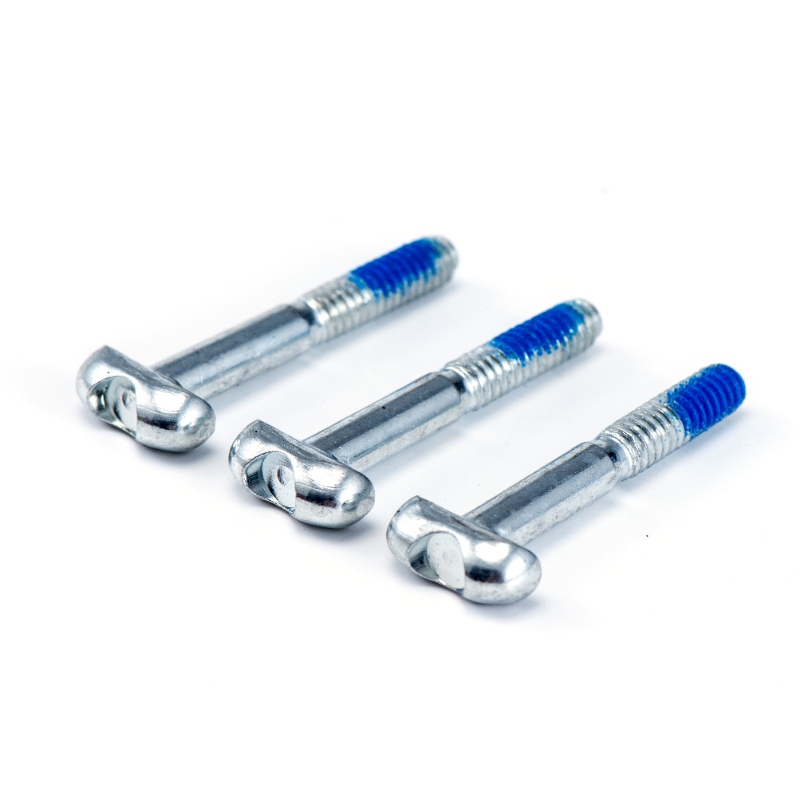T-Screws: Technical Overview, Applications, and Maintenance
T-Screws, also known as T-slot screws or T-Bolts, are specialized Fasteners designed to secure objects within T-slotted tracks or channels, commonly found in machine tool tables, assembly jigs, and modular framing systems. These screws feature a unique T-shaped head that slides into the T-slot and locks into place when rotated 90 degrees, providing a secure and adjustable clamping mechanism.
Key Technical Characteristics:
Material Composition: Typically manufactured from high-grade alloy steel (e.g., AISI 4140) with a tensile strength of 850-1000 MPa, or stainless steel (AISI 304/316) with corrosion resistance up to pH 4-9 environments.
Head Dimensions: Standard T-head widths range from 6mm to 24mm, with height tolerances of ±0.05mm for precision fit in T-slots.
Thread Specifications: Available in metric (M6-M20) and imperial (1/4"-3/4") threads with pitch accuracy of ±0.02mm, meeting ISO 68-1 standards.
Surface Treatments: Common coatings include zinc plating (5-15µm thickness) for corrosion resistance, or black oxide for reduced light reflection in optical applications.
Torque Capacity: M10 T-screws can withstand 45-60 N·m of tightening torque without deformation, depending on material grade.

Applications of T-Screws
The unique design of T-screws makes them indispensable in various industrial and manufacturing settings:
Machine Tool Fixturing: In CNC machining centers with T-slotted tables (standard slot widths of 10mm, 12mm, or 14mm), T-screws provide workholding forces up to 5000N per clamp point, ensuring workpiece stability during high-speed machining operations reaching 15,000 RPM.
Modular Assembly Systems: Used in aluminum extrusion framing (e.g., Bosch Rexroth or 80/20 systems) with slot sizes from 8mm to 16mm, allowing reconfigurable structures with positioning repeatability of ±0.1mm.
Automotive Jigs: In body-in-white assembly lines, T-screws withstand vibration frequencies up to 200Hz while maintaining clamping forces of 200-400N per fastener in temperature ranges from -20°C to 120°C.
Optical Equipment: For mounting precision optical components, black-anodized T-screws with Ra 0.8µm surface finish minimize light scattering while providing 0.01° angular adjustment capability.
Test and Measurement: In coordinate measuring machine (CMM) fixtures, T-screws maintain dimensional stability within 2µm/m thermal expansion coefficients over 20-22°C controlled environments.
Maintenance Procedures for T-Screws
Proper maintenance ensures optimal performance and extends the service life of T-screws:
Cleaning Protocol:
Remove metal chips and debris using a 10-15 psi air blast or non-metallic brush, followed by ultrasonic cleaning in pH-neutral solutions for 5-10 minutes at 40-50°C.
For stainless steel screws, passivate with 20-30% nitric acid solution every 6-12 months to restore corrosion resistance.
Lubrication Requirements:
Apply dry-film lubricants (e.g., molybdenum disulfide) with 5-10µm thickness for high-temperature applications (>150°C).
For general use, use lithium-based greases with NLGI #2 consistency, reapplying every 500-1000 cycles or 6 months of service.
Inspection Criteria:
Check for thread wear using GO/NO-GO gauges - replace if thread engagement exceeds ±10% of original pitch diameter.
Measure T-head dimensions with micrometers - discard if width reduction exceeds 0.1mm from original specifications.
Inspect for stress cracks using 10x magnification or dye penetrant testing, especially after 50,000 load cycles.
Storage Conditions:
Maintain relative humidity below 60% RH with temperature stability within 15-25°C.
Use VCI (Vapor Corrosion Inhibitor) paper for long-term storage exceeding 3 months.
Organize by size/material in divided containers with >5mm separation between components to prevent galvanic corrosion.





